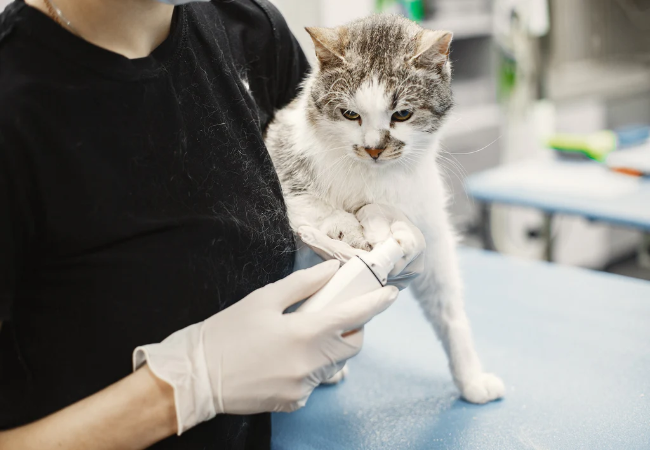How to Tell If Your Cat Is in Pain 2025: Subtle Signs Vets Don’t Want You to Miss 🐱✨

In this article
How to Tell If Your Cat Is in Pain 2025: Subtle Signs Vets Don’t Want You to Miss 🐱✨
By Dr. Duncan Houston BVSc
Cats are masters of hiding pain. By the time they're limping or crying, something has likely been wrong for a while.
I’m Dr. Duncan Houston, veterinarian and founder of Ask A Vet. I’ve treated hundreds of cats with pain that owners missed for weeks or months—not out of neglect, but because cats are subtle. Here's how to spot it early.
😾 Why Cats Hide Pain
- In the wild, showing weakness makes cats a target
- Even domestic cats have evolved to appear “fine” until they’re not
- This means you must look for small changes—not dramatic signs
🚩 Subtle Signs Your Cat Might Be in Pain
- Sleeping in unusual places
- Hiding more or becoming withdrawn
- Aggression when touched or petted (especially around the hips or back)
- Changes in grooming—overgrooming one area or a messy coat
- Loss of interest in play or jumping onto surfaces
- Litter box avoidance (due to discomfort climbing in)
🔬 Common Causes of Pain in Cats
- Arthritis – especially in older cats or large breeds
- Dental disease – cats rarely stop eating, but show pain through pawing or chewing oddly
- Injuries – sprains, bites, or trauma from falls or fights
- UTIs or bladder stones – painful urination, frequent visits to the box
- Constipation – common in older or long-haired cats
🩺 When to Call a Vet
- Sudden or consistent hiding
- Change in walking or jumping behavior
- Overgrooming one area or visible wounds
- Change in appetite, behavior, or vocalization
📊 Vet Diagnosis of Feline Pain
- Physical exam with gentle manipulation of joints and spine
- Dental exam under sedation if oral pain is suspected
- Imaging (X-rays, ultrasound) for arthritis, injury, or internal issues
💊 Pain Relief Options for Cats
- NSAIDs like meloxicam (vet-prescribed, cat-specific)
- Gabapentin for nerve or arthritis pain
- Laser therapy, acupuncture, or joint injections (advanced cases)
- Prescription diets for joint or urinary pain
🏠 Home Comfort Tips
- Elevated beds or stairs to avoid jumping
- Warm bedding in quiet areas
- Daily gentle brushing if grooming is difficult
- Enrichment toys that don’t require jumping or running
🔗 Comfort Tools from
- Felt Cat Caves – Provide quiet, low-entry comfort spots for older or painful cats
- Grooming Tools – Help reduce painful matting in arthritic cats
📋 Summary Excerpt
Cats don’t cry when they’re hurting. A vet explains how to spot subtle signs of feline pain and what you can do to help your cat feel better.
❓ FAQs
-
Q: How can I tell if my cat is in pain?
A: Look for behavioral changes like hiding, aggression, a messy coat, or reluctance to jump. Pain in cats is subtle. -
Q: What can I give my cat for pain?
A: Only vet-approved medications. Never give human drugs—ibuprofen or Panadol can be fatal to cats. -
Q: Can cats get arthritis?
A: Yes—very commonly. Most cats over 10 have some degree of joint disease.






